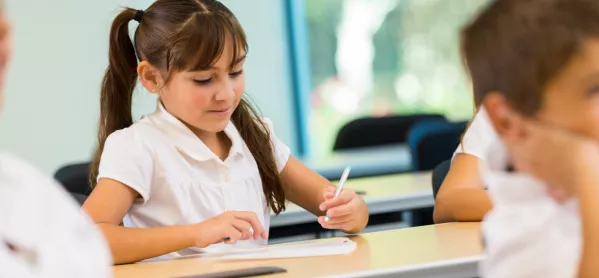As part of its Coronavirus guidance, the Department for Education asks schools to set up their classrooms in a manner conducive to social distancing. One specific instruction asks teachers to arrange their classrooms “with forward-facing desks”.
“Schools should make small adaptations to the classroom to support distancing where possible,” the guidance says. “That should include seating pupils side by side and facing forwards, rather than face-to-face or side-on, and might include moving unnecessary furniture out of classrooms to make more space.”
The rationale behind this advice is relatively straightforward. If asymptomatic pupils who have Covid-19 are not breathing in the direction of other pupils’ mouths, then they are less likely to pass the virus on to others. The same logic has been used to allow people back into cinemas and on to aeroplanes.
Coronavirus: Does classroom seating make a difference?
Unfortunately, while it is true that people watching a film or taking a flight do sit in rows facing forwards, it is there that the similarities with a typical school classroom end.
For a start, cinemas and planes usually have industrial ventilation systems running continuously. So is the advice to schools realistically going to help to stop the virus from spreading in a classroom?
“If there’s poor ventilation, then any exhaled breath that is carrying virus will build up in the air - just like the smoke from a cigarette would - and it can contaminate the whole airspace, regardless of which way people are facing,” says Julian Tang, honorary associate professor and clinical virologist in the University of Leicester’s respiratory sciences department.
Read more:
“The exposure is really based on the amount of hours someone is exhaling, and the amount of time you’re in the same vicinity as that source. If the airborne contaminant - the virus, in this case - is not removed then, over time, even face masks will have more limited effectiveness.”
Ventilating classrooms
If the air does become saturated in this way, the virus will “come around the edge of the mask and cause infection”, Tang says - unless the air is regularly being changed.
“Imagine that you’re in a classroom that is 10 metres long, five metres wide and two metres high,” he says. “If you have 10 kids in there, and maybe one of them is infected, then that one person might fill up that airspace over a six-hour school day, for example.
“But if you have 30 kids in the class, and three have Covid, then there is more of the virus circulating and if you’re not exchanging the air...it will reach a concentration level that may then infect more of those kids in that class, and also the teacher.”
Build-up of virus
Classrooms in primary school, where pupils are more likely to stay in the same room for most of the day, might have more build-up than those in secondary schools, where there is more movement between classrooms, Tang adds.
That said, he acknowledges that there is some potential benefit to seating pupils in a way that means they are not talking face-to-face, provided that other precautions are taken to prevent this build-up of airborne virus.
“In Germany, a lot of schools have suggested that children bring their coats and blankets into the class, and then every 20 minutes, they open all the windows to remove that build-up of airborne virus,” Tang says.
“Even if you opened those windows once every half an hour, or in between periods at secondary when pupils are changing classrooms, then by the time the next class comes in, you’ve probably ventilated quite a lot of air out of the window.”
Preventing that build-up of airborne virus then, rather than sitting children in rows, is the key to keeping infection rates down.
Chris Parr is a freelance journalist





